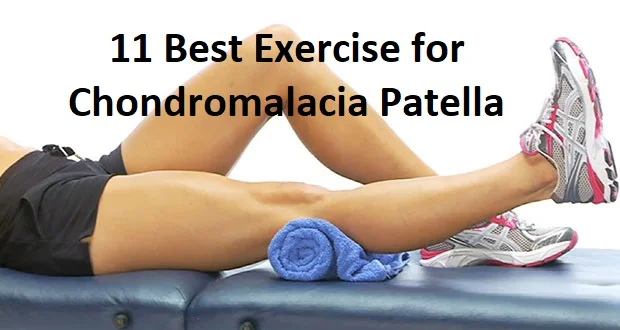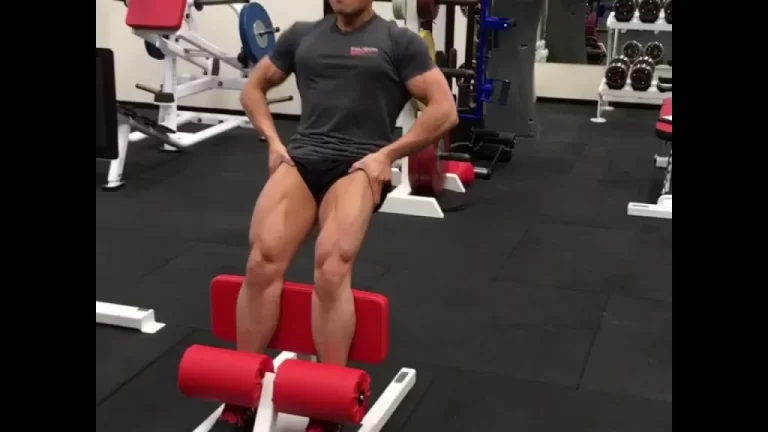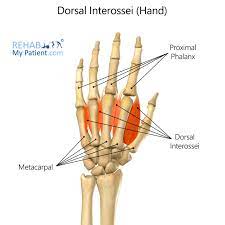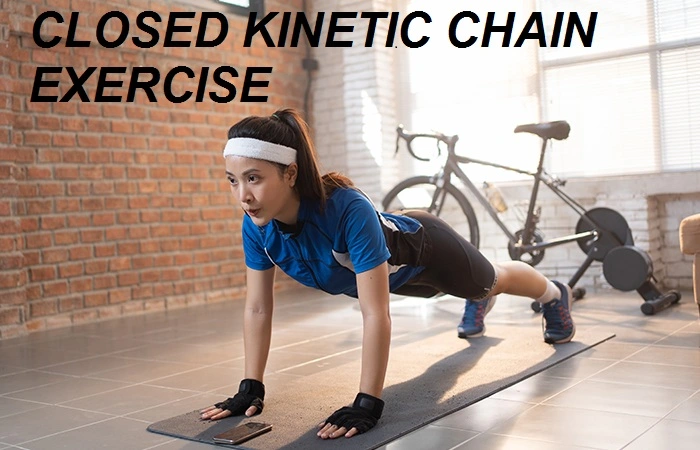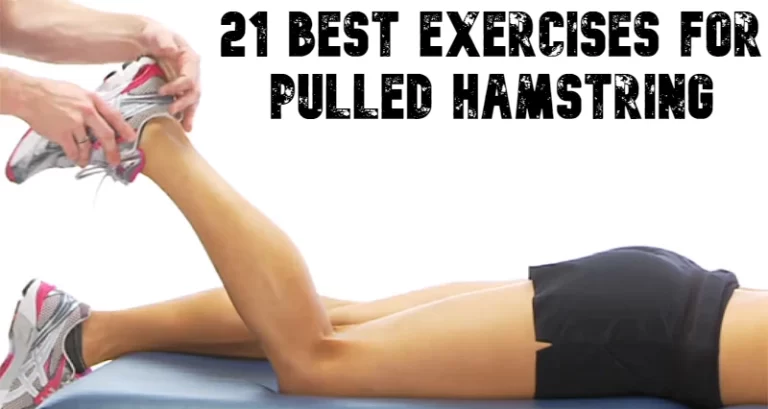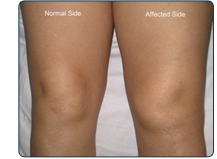11 Best Exercises for Chondromalacia Patella
Exercises for Chondromalacia Patella are an essential part of your overall treatment program that can be managed with specific exercises that strengthen the quadriceps, stretch the hamstrings, and target the gluteal muscles. Low-impact cardio exercises, such as swimming or cycling, can also be beneficial. However, it is important to consult with a healthcare professional for a personalized exercise program based on your specific condition.
Table of Contents
Introduction of chondromalacia patella
Chondromalacia patellae also known as“runner’s knee,” occurs by the softening or loosening of the kneecap cartilage. mostly seen in young athletes, it may also affect older adults with arthritis of the knee.
Chondromalacia commonly occurs reason of an overuse injury in sports, and sometimes taking a rest for a week and performing home exercises and training can provide a good outcome. In other situations, knee alignment is not proper is the cause, and only giving rest does not provide relief to the knee. The symptoms of a runner’s knee are knee pain and crushing sensations, but many people who suffer from these symptoms never take medical or physiotherapy treatment.
Tight or weak muscle structures can create imbalances in the leg that cause problems in lower extremity movement. Exercise can focus on pain-free exercise which reduces the pain, and increases the muscle endurance of the knee joint. Exercise will maintain muscle properties and mobility and flexibility.
Causes of CMP
- Poor alignment due to a congenital condition.
- weakness of the hamstring muscle and quadriceps muscles.
- repeated activity that give stress on your knee joints, such as running, skiing, or jumping.
- direct blow or trauma to your kneecap.
- Trauma, such as fracture or dislocation of the kneecap
- A weakness of the muscles around the knee (Some muscles are weaker than others.)
- repeated bending and twisting movement of the knee joint, during sports
- improper aligned muscles or bones near the knee joint
- meniscus injury
- Rheumatoid arthritis or osteoarthritis
- An infection in the knee joint
Symptoms of Chondromalacia patellae
- Knee tenderness
- Knee pain that is aggravated after sitting for a prolonged period of time, using stairs, or getting out of a chair can also aggravate the knee pain
- Crushing or grinding sensation when the knee is straightened
- Knee pain during or after vigorous activities
- Pain may worsen after sitting for a prolonged period of time or during activities that gives extreme pressure on your knees, such as standing for an extended period or exercising.
11 Best Exercises for Chondromalacia patellae
Quadricep Contraction
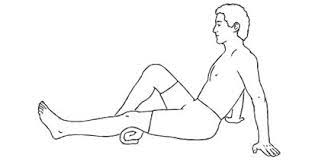
you should take a supine position with both legs extended on the mat or plinth. put the towel or napkin under the knee your napkin should be rolled up under one knee so that it is slightly bent.
then you should Lift the foot off the plinth or mat so that the knee become straighten fully.
Then you should place the napkin through your knee and you should hold this position for 5 to 10 seconds. you can perform it without holding.
perform the quadriceps contraction for 10 -15 repetitions and then switch legs. This should be performed four to five times a day. The quadriceps contraction you can perform in supine and sitting positions.

Straight Leg Lift
you should take a supine position with one leg bent at a 90-degree angle with the foot flat on the mat or plinth and the other leg fully extended.
then you should tighten the quadricep muscle (thigh muscle) and then straighten the leg to a 45-degree minimum.
then hold the leg in this elevated position for a few seconds
Then slowly lowering it back to the ground.
perform the straight leg raise for 10 -20 repetitions then change legs. You should be performed straight leg raises three to five times per day.
External Hip Rotation
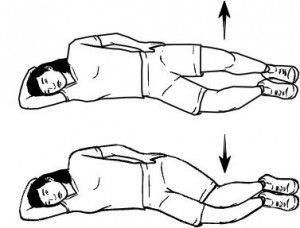
you should start with the side-lying position on the plinth on your side with the knees place on your ankle and bent at 90-degree angles and your hips should be in a flexion position at an angle of about 60 degrees.
Keeping your heels placed together and the pelvis hitched and perpendicular to the plinth or mat, raise your top knee as high as you can, hold this position for 5-10, and then back to the starting position.
performed external hip rotation exercise 15 to 20 times per side for two or three sets.
Side Lying Leg Raise

you should take a side-lying position your hips, knees, and ankles gathered on top of each other, keeping your top leg straight and the bottom leg bent.
then you should Contract your quadricep muscles of the top leg to tighten your leg and lock out the knee joint.
you should maintain this contraction during exercise, by slowly raising your top leg up while keeping your leg straight the entire time. you should take care and don’t let your body or hips roll backside.
Hold this position and raise the leg for five seconds or ten seconds.
Slowly back to the starting position of your leg during continuing to maintain a quadriceps contraction to keep your knee straight.
Repeat for 10–15 repetitions, then rest.
Repetition should be for side leg raise in four sets of 15–20 repetitions for each leg.
Hip Extension Leg Raises
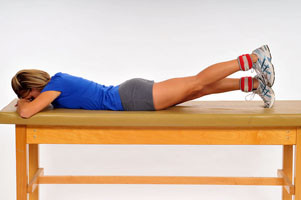
You should take a prone position with your both hips and knees extended.
then you should Contract your quadriceps muscles of one leg.
then you should maintain this contraction, raise your leg up while keeping your leg straight the entire time you should maintain the contraction.
Slowly back to the original position of your leg during continuing to maintain a quadriceps contraction throughout the exercise, you should keep your knee straight.
perform the hip extension leg raise for 20–25 repetitions, then rest.
Perform this exercise for three sets of 10–15 repetitions each day.
Knee Extension or knee swing

First, you should Sit on a high plinth or table (slightly on the edge) and let your leg hang from the ground which is necessary.
Then you should extend your knee as far as feels comfortable, and hold the end position for 5 – 10 seconds.
after that back to the starting position Keep the movement smooth, not too fast. You can also straighten your leg. This exercise especially reduces the stiffness of the knee joint and is useful for increasing mobility to the knee joint. If you don’t have a high chair, you can use the study table and take the sitting position on the table.
Performed the knee extension exercises 15 -20 times.
Repeat for four sets of 15 -20 repetitions each.
VMO Strengthening
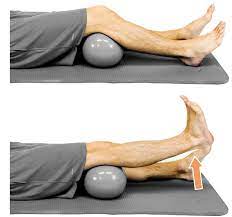
First, you should take a VMO board or bolster for this exercise. you should take the supine position on the plinth or mat.
put the VMO board or bolster under the knee you should feel comfortable with vmo board or bolster.
Then you should slowly lift your leg off the floor of the plinth. this exercise contracts your VMO by squeezing your inside thigh muscle. When your leg is a few inches off the floor of the plinth, then you performed a dorsiflexion moment of your ankle joint.
you will feel pulled in the calf and hamstring muscles.
Performed the VMO exercise 15-20 times.
You should repeat for 3-4 sets of 15- 20 repetitions each.
Clamshell
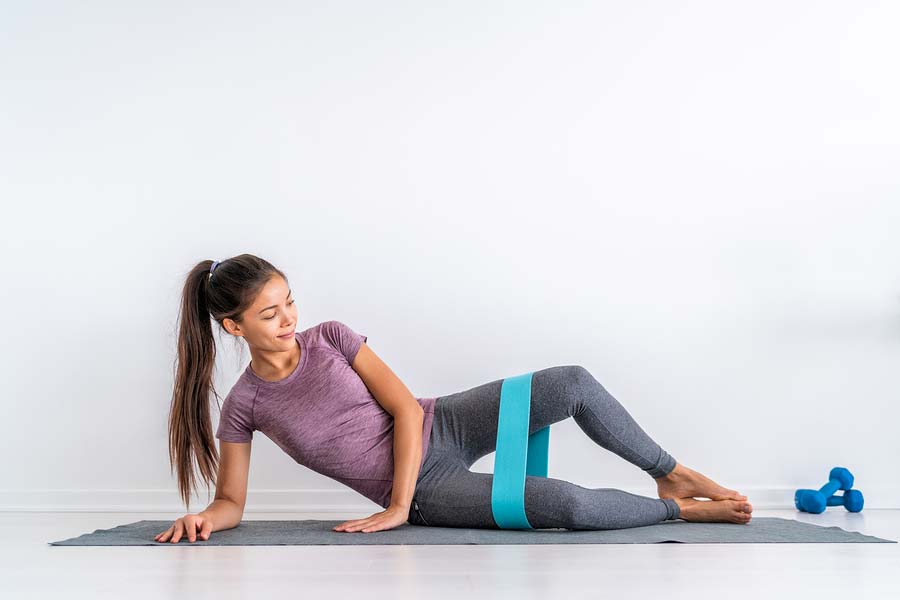
Start with the side-lying position with your hips, knees, and ankles assembled on top of each other, with your knees bent.
You should Keep your ankles together, and then slowly lift your knee as you can. Do not move your body or hips, kness during exercise hold the proper position of joints.
Hold your knee at the top position for 5 or 10 seconds.
Back to starting position, then repetition should be 10–15 times.
You should repeat 3-4 sets of 10–15 repetitions each.
To increase the intensity, add a resistance band around your thighs above your knees to increase the strength of your glute muscles.
Semi Squat
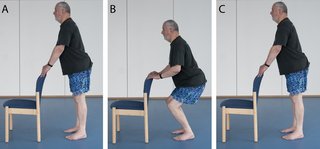
You can take the chair for this exercise Start with the standing position in front of a chair.
then you should Push your hips back and flexion of your knees to slowly lower into a squatting position.
Stop approximately in between the half position of squat above the seat of the chair to maintain a 45-degree knee bend.
You should Hold this squat position for 5 – 10 seconds, then back to the starting position up If you are not comfortable in the squat position so don’t hold it in between exercises.
Semi-Squat exercise Repeat for 5 -10 repetitions, then rest.
Repeat for three sets of 5 –10 repetitions each.
this exercise improves the intensity, improve the range of motion to a full squat as long as you do you should not feel pain in your kneecaps during squats. you can attach the theraband Add around your thighs just above your knees to help maintain proper alignment of your hips and knees and increase the strength of your glutes.
Wall Slide

You should begin by taking a standing position with the heels about 6 inches stay away from a wall and the feet about a foot apart.
You should press the wall use of your back and buttock pressure is necessary against the wall. required minimum pressure.
Slowly slide the hips down the wall until the knees are in a flexion position at roughly a 45-degree angle.
Hold that position for about five to ten seconds, and then slowly slide back up to the starting position.
It is necessary you should not bend too quickly or too deeply as this can irritate the knee.
Repeat this wall slide 10 to 15 times per day. and for two to three sets in a whole day. for the wall slide you can also use the ball for the support purpose. you can put the ball between your back and the wall.
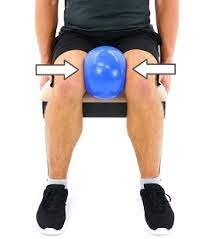
Inner Range VMO Strengthening:
First, you should take a chair for this exercise. now Sit on a chair comfortably and slightly towards the edge of the chair.
Put a folded towel and pillow between your thighs. then you should Cross your legs.
Squeeze the towel with your thighs as you attempt to lift the bottom leg.
The top leg will provide resistance to the thigh which provides strength to the thigh muscles. Inner-range VMO exercise is an increase in the strength of the quadriceps (thigh) muscle. this exercise increases the strength of the thigh muscles.
Other “safe” exercises for chondromalacia patellae include:
- Walking (avoid hills)
- Cross-country skiing
- Kayaking or paddle boarding
- Low-impact yoga (you made need to modify certain poses)
- Barre workouts also called low-impact exercises (with certain modifications, like shallower knee bends)
- Water aerobics
- Rowing
- Rollerblading
- Using an elliptical trainer
Chondromalacia Knee Exercises to Avoid
While chondromalacia exercises can be great if they reduce your kneecap pain, there are also some exercises that should be avoided because they can increase the pain. These are the list of avoided exercises while chondromalacia patella just because they put a lot of pressure on your kneecap. Examples.
- Lunges
- Deep squats
- Leg extension machine
Tips to prevent chondromalacia patellae
You can help reduce your risk of developing runner’s knee by following this prevention:
Avoid repeated stress on your knee Wear kneepads if you have to spend time on your knees.
Maintaining muscle properties strengthens your quadriceps, hamstrings, abductors, and adductors of the thigh.
Wear shoe inserts that maintained your flat feet by increasing or maintaining your arch. This will reduce the amount of pressure placed on your knees and may proper alignment to the kneecap.
Finally, excess body weight may stress your knees. Maintaining a healthy body weight can help reduce pressure on the knees and other joints. You can also be considered to lose weight by reducing your sugar and fat intake, eating green vegetables, fruits, and whole grains, and doing some exercise (which involves the whole body) for at least 30 minutes a day, three to five times a week.
Precautions while exercising
You should stop the exercise if you feel any discomfort during any particular exercise.
you should stop stepping (stair climbing) if you feel uncomfortable in your groin.
Avoid jerky knee movement during exercise.
You should Perform all exercises in a proper manner or method, give proper stretch to the start of the exercise, give proper hold between the exercise, and give a proper repetition of each exercise.
Wear proper and loose comfortable clothes during exercise which provide free movement to your whole body and you should not wear tight clothes while exercise causes you to feel uncomfortable.
Give the proper stretch to the particular tight muscle if you can feel uncomfortable it’s fine but you should never feel stabbing pain and sharp pain during stretching. avoid this type of stretch.
You should never hold your breath during exercise. during exercise, you should take deep breaths and slowly exhale through the mouth. when you hold your breath during exercise is increases the tension in your muscle so there are chances of high blood pressure.
You can add strengthening exercises when you take the normal range of the joint.
FAQ
Mostly chondromalacia physical therapy exercises can be done at home using some equipment and exercise instruction from health care. Exercises that can reduce knee pain and increase the strength of around knee muscle. exercise such as straight leg raise, to strengthen, knee extension and ice therapy, etc.
While chondromalacia patella articular cartilage heals poorly, chondromalacia usually is a permanent problem commonly seen in females. sometimes, nonsurgical treatments often can reduce knee pain within a few months. If non-surgical treatment was not successful, your doctor can perform surgery to remove the area of damaged or worst cartilage.
The squat exercise is a high-impact activity that provides lots of pressure to the kneecap against to femur bone. such as squats and lunges that include a high amount of knee bending, and high-impact activities such as running and jumping should be avoided until the pain decreases and squatting increases the strength of the muscles around the hip and knee joints increase the strength of muscle. If you feel mild discomfort while this exercise so it’s okay but if you feel severe pain so you should avoid it.
Grading System for Chondromalacia Patella
Grade 3 represents thin or thinning of cartilage or cartilaginous become thin which is a moderate condition and the active deterioration of the tissue. Grade 4 is the most severe type and represents the whole degeneration of the cartilaginous.
To firstly decrease the symptoms of chondromalacia and to help you recover more easily and fast, try this treatment included:
Elevating the affected knee: Elevate your leg while in the sitting position; place your affected leg up with a pillow under it.
Cold compression therapy: Ice can reduce the pain you should take ice therapy on the knee for up to 15 to 20 minutes every 3 to 4 hours for several days.
For this condition, you need 4-6 weeks of Physical Therapy treatment for this condition, and 2-3 months, and also add home exercise, stretching and strengthening program, and Ice therapy to treat your chondromalacia patella. physiotherapy treatment reduces knee pain and also increases the strength of thigh and knee muscles.ice therapy also provides pain relief for knee pain.

